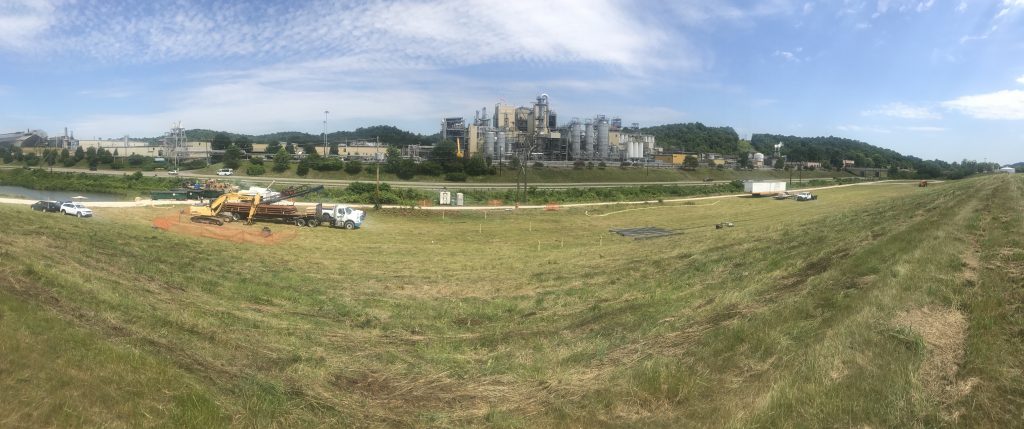Maxi-Rig Horizontal Sparge Wells in Ohio
DTD recently completed the installation of two 850′ long horizontal sparge wells in Southern Ohio. Understanding the local geology on the project site (non-cohesive, collapsing sands and gravels), we enlisted our Knock Off (KO)technology to complete the installations. The Knock off system includes our patented transmitter housing teamed with a sacrificial drill bit (also patented) that is “knocked off” downhole to enable installation of the well materials through the drill string. The knocked off bit also serves as as an anchor to retain the well materials in the bore. The drill rod is then stripped from the bore leaving the horizontal well in place. This system was designed specifically as a one pass system to install long, blind horizontal wells to a designed position in unconsolidated/collapsing ground conditions. Basically, if the HDD bore can be drilled and steered to the targeted zone, the well materials can be placed.

Setup for drilling the first well.
We use the KO system with our two largest rigs (American Augers DD210 and our CMS 9030). These machines use range 2, large diameter drill rod (averaging 31.5′ in length and ~1,000 lbs per joint) in conjunction with the KO system to drill an ~12″ diameter bore. Since the “9030” is currently working in Alaska, we used the AA-DD210 to complete these horizontal remediation wells. Setup at the bore entry was straightforward since we were working in a large grassy area, flanking the northern border of a coal ash landfill. Multiple, rain and thunder storms hindered our progress, but the drilling and construction continued in between the storms. The 850′ long horizontal air sparge wells targeted a plume ~60′ below the ground surface and each had 450 feet of custom designed sparge well screen.
Although most HDD projects run smoothly and are successfully completed, problems do occur that must be managed and resolved. In Ohio, the project ran longer than expected, due primarily to weather delays, but also mechanical issues. Vendor quality assurance and control problems manifested themselves in the form of out-of-spec tooling and well screen being delivered to the site. As with any challenges on our projects, our managers explained the issues, the options, and worked with our clients to develop an appropriate course of action. In this case, the tooling was modified prior to use, and the new well screen was manufactured on an expedited schedule, allowing the project to proceed with only a short delay.